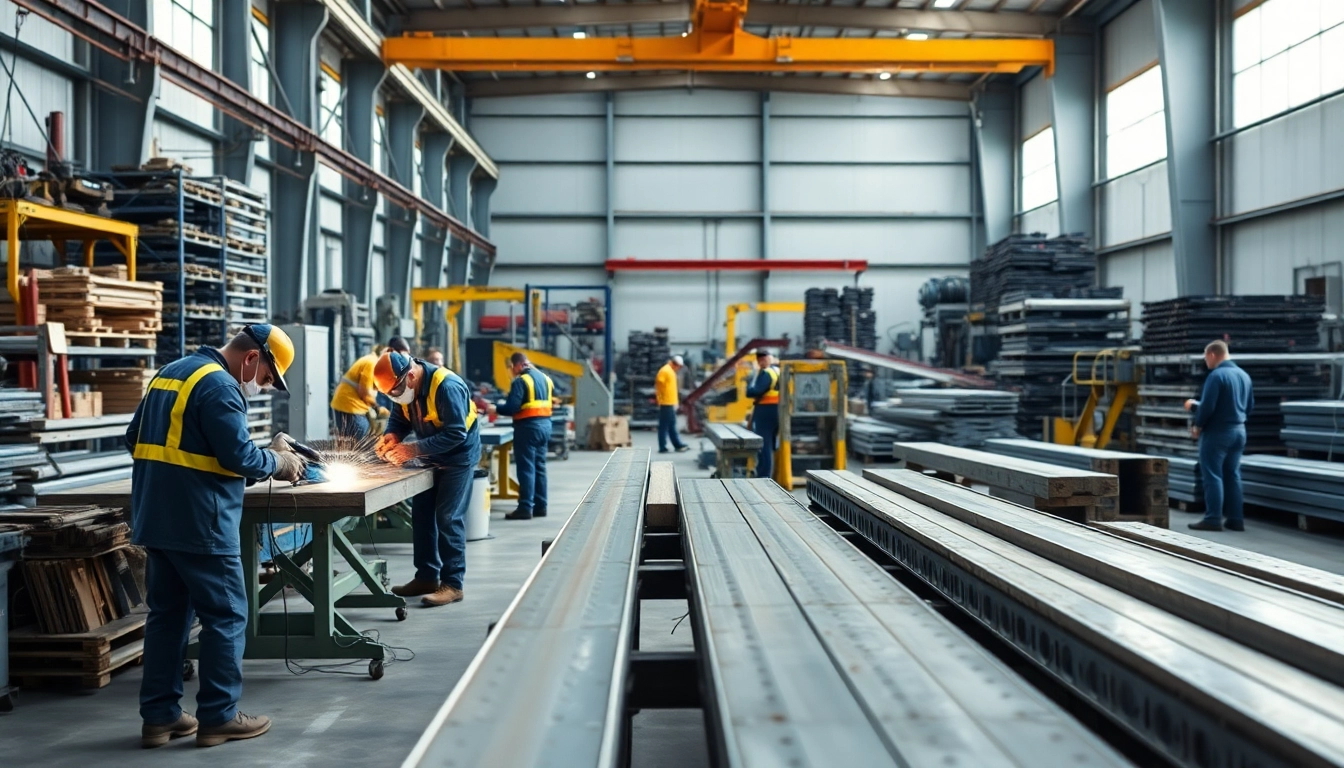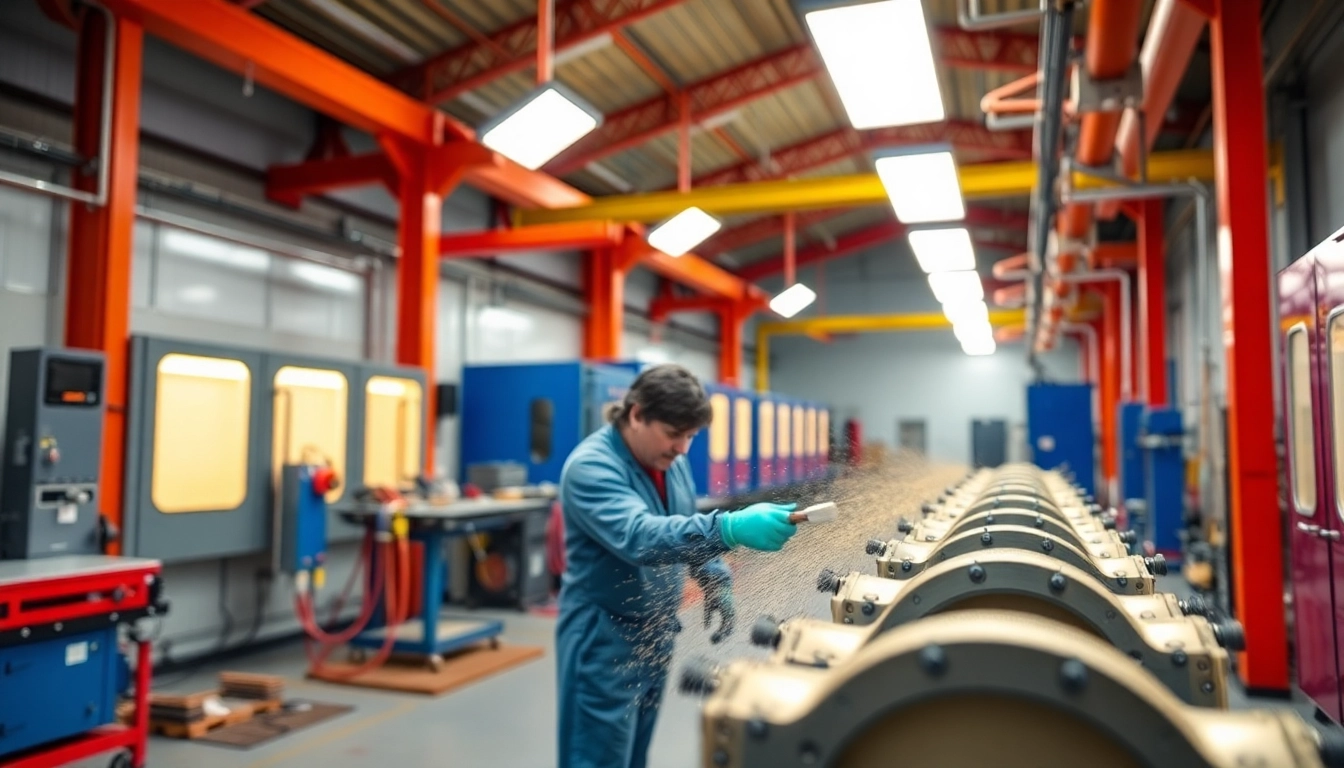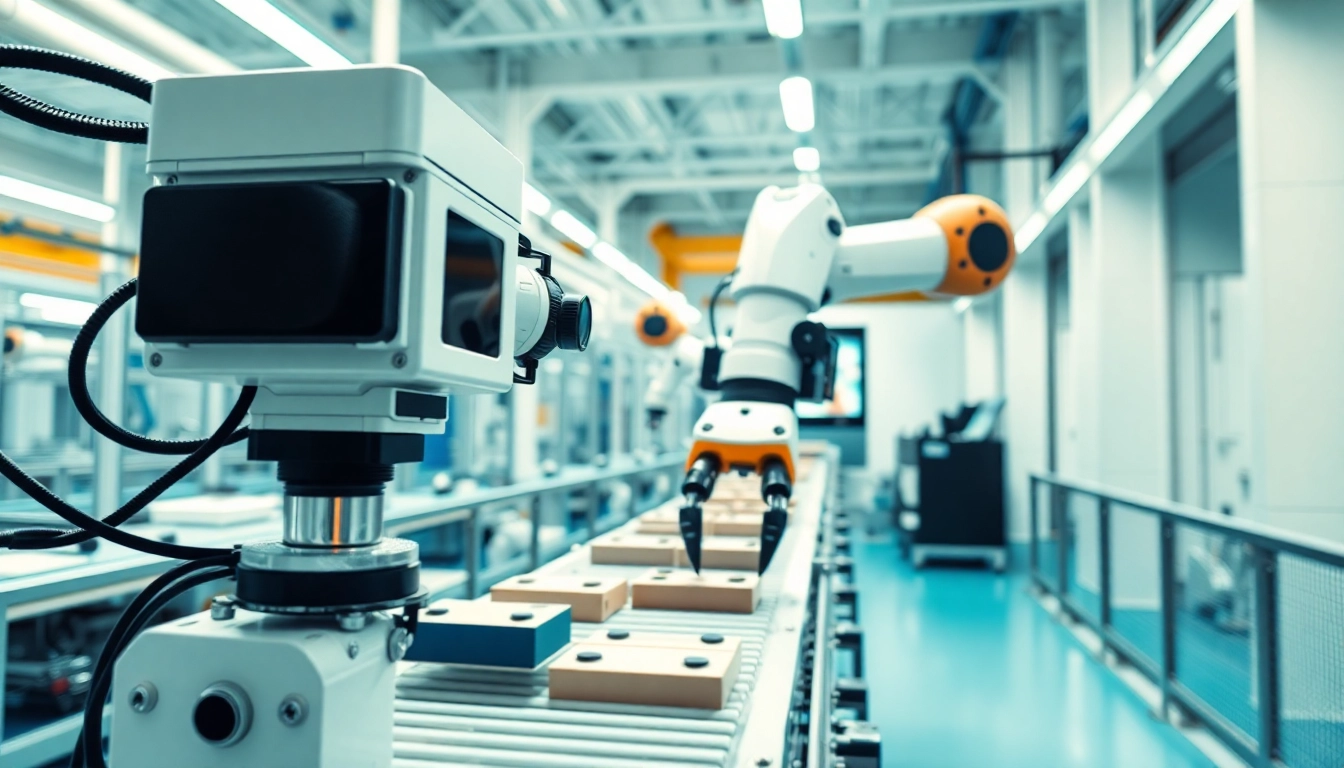Custom steel fabrication is a dynamic and essential process in various industries, serving as a backbone for countless projects and applications. This sophisticated operation combines artistry with engineering, delivering bespoke solutions that cater to precise specifications and unique requirements. Understanding the intricacies of custom steel fabrication is vital for businesses seeking to harness its benefits while ensuring quality, efficiency, and sustainability.
Understanding Custom Steel Fabrication
What is Custom Steel Fabrication?
Custom steel fabrication involves the creation of steel structures and components tailored to specific designs and applications. Unlike mass-produced metal products, custom fabrication focuses on unique requirements, allowing for intricate designs that can vary widely in size, complexity, and application.
Utilizing various techniques such as cutting, welding, bending, and assembly, fabricators transform raw steel into functional and aesthetically pleasing products. The scope of custom steel fabrication spans a diverse array of industries, including construction, manufacturing, and artistic endeavors, reflecting its versatility and adaptability to meet distinct needs.
Importance of Custom Steel Fabrication in Industries
The significance of custom steel fabrication cannot be overstated, as it provides critical solutions for various sectors. In construction, for instance, it plays a vital role in creating structural frames, bridges, and other infrastructure. Meanwhile, the manufacturing sector relies on custom fabricating steel to produce machinery parts, tools, and equipment that enhance productivity and efficiency.
Moreover, the ability to customize allows businesses to innovate and push boundaries, offering tailored solutions that can lead to improved performance, safety, and durability. Furthermore, with the growing emphasis on sustainability, many fabrication companies are adopting eco-friendly practices, resulting in less waste and a reduced carbon footprint.
Common Techniques Used in Custom Steel Fabrication
Several key techniques define the world of custom steel fabrication. These methods ensure precision, durability, and the ability to bring unique visions to life:
- Cutting: This is the process of slicing steel into specific shapes and sizes. Techniques may include laser cutting, plasma cutting, and water jet cutting.
- Bending: Involves reshaping steel through press brakes or rolling machines to achieve the desired angle or curvature.
- Welding: Essential for joining steel components together, welding can employ methods such as MIG, TIG, or spot welding, each best suited to different materials and applications.
- Machining: This process involves the removal of material using tools to achieve precise dimensions, enhancing the functionality of fabricated components.
- Finishing: After fabrication, processes like painting, galvanizing, or powder coating are applied to enhance durability and aesthetics.
Key Applications of Custom Steel Fabrication
Construction and Infrastructure Needs
Custom steel fabrication is pivotal in the construction industry, where it underpins infrastructure development. Fabricated steel beams, columns, and trusses are essential for constructing buildings and bridges. Take skyscrapers, for instance: they rely on a robust steel framework to support their immense weight and withstand environmental forces.
Additionally, customized steel solutions are increasingly being employed for sustainable construction practices, such as modular building components that significantly reduce construction time and waste. As architects and engineers continue to push the limits of design, the need for adept fabricators who can realize these visions becomes ever more critical.
Manufacturing Solutions
The manufacturing sector benefits extensively from custom steel fabrication. Many industries depend on tailored steel components for machinery, electronics, and household appliances, which are integral to their production processes. The accuracy and tailored characteristics of these components can enhance machinery performance, provide safety, and improve operational efficiency.
Moreover, manufacturers embrace automation technology in their fabrication processes, integrating robotics and computer-numerical control (CNC) technologies to achieve higher precision and efficiency levels. This trend not only streamlines production but also enables quicker responses to market demands and custom orders.
Custom Fabrication in Art and Design
Steel fabrication goes beyond the realms of industry and manufacturing, permeating into art and design. Artists and designers utilize custom steel fabrication to create sculptures, installations, and functional art pieces that push the boundaries of creativity. The malleability and strength of steel allow for unparalleled artistic expression, from delicate sculptures to monumental installations.
Moreover, interior designers incorporate custom-fabricated steel elements, such as railings, furniture, and decorative features, adding an industrial aesthetic that resonates with contemporary design trends. This fusion of artistry and engineering reflects the versatility and utility of custom steel fabrication across diverse fields.
Choosing the Right Fabrication Service for Custom Steel Fabrication
Assessing Capabilities and Equipment
When selecting a custom steel fabrication service, it is crucial to evaluate the fabricator’s capabilities and equipment. Advanced machinery and tools, along with skilled personnel, play a vital role in achieving high-quality fabrication results. Look for providers offering modern technology such as CNC machining, laser cutting machines, and automated welders that ensure precision and reliability.
Furthermore, inquire about their experience with complex designs and materials. A fabricator with a proven track record will be more adept at understanding your specific requirements and overcoming potential challenges during the fabrication process.
Understanding Material Sources and Quality
The quality of materials used in custom steel fabrication directly affects the performance and longevity of the final product. Choosing a fabricator who sources high-grade steel from reputable suppliers ensures that the components will stand the test of time, resisting wear and corrosion.
Additionally, consider the fabricator’s ability to work with various materials, such as stainless steel, carbon steel, and alloy steel. Each material has unique characteristics, and understanding which one suits your project is essential for achieving the desired outcome.
Evaluating Cost vs. Quality
While cost is a significant factor when choosing a custom steel fabrication service, it should never compromise quality. It is essential to obtain quotations from multiple providers and analyze their offerings to ensure you are getting a fair deal. Be wary of prices that seem too good to be true, as they may indicate subpar materials or craftsmanship.
Consider the long-term implications of your investment in custom steel fabrication. Higher upfront costs may ultimately yield better performance and durability, leading to lower maintenance and replacement expenses over time.
Innovations in Custom Steel Fabrication
CNC Technology in Custom Steel Fabrication
Computer Numerical Control (CNC) technology has revolutionized custom steel fabrication, enabling unparalleled precision and repeatability in production. CNC machines can be programmed to perform various operations, from cutting and bending to engraving and milling, significantly improving the efficiency of the fabrication process.
Furthermore, CNC technology allows for intricate designs that may have been prohibitively complex or time-consuming to achieve using traditional methods. This innovation streamlines workflows, reduces labor costs, and minimizes the risk of human error, translating into higher-quality products.
Eco-Friendly Practices
As environmental awareness grows, many custom steel fabrication companies are adopting eco-friendly practices to minimize their impact. These practices may include recycling scrap metal, using energy-efficient machinery, and reducing waste in fabrication processes.
Implementing sustainable practices is not only beneficial for the environment but can also enhance a company’s reputation and appeal to eco-conscious customers. Companies embracing sustainability will likely find themselves at a competitive advantage as industries shift toward greener practices.
Future Trends to Watch in Custom Steel Fabrication
The landscape of custom steel fabrication is continually evolving, with several trends shaping its future. Innovations in additive manufacturing, such as 3D printing with metal, offer new possibilities for producing complex, lightweight parts that traditional methods cannot achieve.
Additionally, enhanced software tools for design and simulation are streamlining the design-to-fabrication process, reducing lead times and improving overall efficiency. The integration of artificial intelligence and machine learning will likely optimize production planning and quality control, leading to even greater advancements in the field.
Measuring Success in Custom Steel Fabrication Projects
Key Performance Indicators
To effectively measure success in custom steel fabrication projects, it is crucial to establish specific key performance indicators (KPIs). KPIs can include metrics such as delivery timelines, defect rates, and cost per unit produced. Monitoring these indicators provides valuable insights into operational efficiency and helps organizations identify areas for improvement.
Additionally, tracking project completion rates against estimated timelines can aid in assessing the overall reliability and effectiveness of the fabrication process, providing a comprehensive overview of performance.
Customer Satisfaction Metrics
Customer satisfaction is paramount in evaluating the success of custom steel fabrication projects. Engaging customers through feedback surveys, performance reviews, and follow-up consultations can provide insights into their experiences and expectations.
Measuring metrics like repeat business, client referrals, and overall satisfaction ratings offers essential insights into the quality of the service provided and the likelihood of retaining customers for future projects.
Case Studies and Success Stories
Documenting case studies and success stories is an effective way to showcase achievements in custom steel fabrication. By detailing specific projects from inception to completion, businesses can highlight their expertise, unique capabilities, and ability to meet client objectives.
These narratives serve as proof of a company’s ability to deliver custom solutions, demonstrating adherence to timelines, budgets, and quality standards. Such testimonials can not only enhance credibility but also attract new clients seeking similar bespoke solutions.



